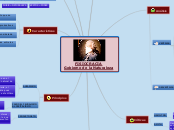CAPACIDADES FISICAS COORDINATIVAS
The Solar System is the gravitationally bound system of the Sun and the objects that orbit it, either directly or indirectly. Of the objects that orbit the Sun directly, the largest are the eight planets, with the remainder being smaller objects, the dwarf planets, and small Solar System bodies.
CLASIFICACIONES
Saturn is known most for its rings.
Galileo Galilei first thought it was an object with three parts: a planet and two large moons on either side.
Not knowing he was seeing a planet with rings, the stumped astronomer entered a small drawing — a symbol with one large circle and two smaller ones — in his notebook.
The rings are made of ice and rock and scientists are not yet sure how they formed. The gaseous planet is mostly hydrogen and helium.
Saturn has over 150 moons and satellites. However, of these vast numbers of moons, only 62 are known and confirmed as moons.
Name at least 5 of these moons.
agilidad
aprendizaje motor
ESPECIALES
A planet's day is the time it takes the planet to rotate or spin once on its axis.
Write down Saturn's day measured in Earth days.
anticipacion
diferenciacion
acoplamiento
ritmo
reaccion: simple y compleja
equilibrio
orientacion
GENERALES O BASICAS
regulacion de los movimentos
adaptacion y cambio motriz
funciones básicas de las capacidades coordinativas:
Uranus is an oddball. It has clouds made of hydrogen sulfide, the same chemical that makes rotten eggs smell so foul.
It rotates from east to west like Venus. Its tilt causes extreme seasons that last 20-plus years, and the sun beats down on one pole or the other for 84 Earth-years at a time.
Methane in the atmosphere gives Uranus its blue-green tint. It also has 13 sets of faint rings.
3. Condicionan el alto rendimiento deportivo.
How long does it take for Uranus to go around the sun?
una unión entre las demás capacidades coordinativas el individuo tiene que ser capaz de aplicar un conjunto de capacidades para que esta acción se realice con un alto nivel de rendimiento
2. Condicionan el aprendizaje motor.
A planet's day is the time it takes the planet to rotate or spin once on its axis.
Write down Uranus's day measured in Earth days.
control y regulación . La fusión de estos dos elementos lleva al dominio técnico
1. Condicionan la vida en general.
que se realizan conscientemente en la regulación y dirección de los movimientos, con una finalidad determinada
DIFERENCIA
It was once considered a planet but in August 2006 the International Astronomical Union (IAU) downgraded the status of Pluto to that of “dwarf planet.”
Pluto is unlike other planets in many respects. It is smaller than Earth's moon; its orbit is highly elliptical.
It's a cold, rocky world with a tenuous atmosphere. Pluto is a very active ice world that's covered in glaciers, mountains of ice water, icy dunes, and possibly even cryovolcanoes that erupt icy lava made of water, methane or ammonia.
CUALIDAD
How long does it take for Pluto to go around the sun?
expresa caracteristicas y atributos personales
CAPACIDAD
define comocapacidades fisicas a la fuerza, velocidad, resistencia y flexibilidad
CAPACIDADES COORDINATIVAS COMPLEJAS
Earth is a water world, with two-thirds of the planet covered by oceans.
It's the only world known to harbor life.
Earth's atmosphere is rich in nitrogen and oxygen.
Its name originates from 'Die Erde,' the German word for 'the ground.'
Earth may once have had two moons, nowadays it has just one.
Agilidad
A planet's day is the time it takes the planet to rotate or spin once on its axis.
Write down the Earth's day in hours.
Acoplamiento
CPACIDADES COORDINATIVAS ESPECIALES
Mars is a cold, desert-like place covered in dust. This dust is made of iron oxides, giving the planet its iconic red hue.
Mars shares similarities with Earth: It is rocky, has mountains, valleys and canyons, and storm systems ranging from localized tornado-like dust devils to planet-engulfing dust storms.
Diferenciación
Anticipación
Mars has two small moons.
Name these moons.
El Ritmo
How long does it take for Mars to go around the sun?
El equilibrio
A planet's day is the time it takes the planet to rotate or spin once on its axis.
Write down Mars's day measured in Earth days.
Capacidad de orientación
CAPACIDADES COORDINATIVAS GENERALES O BÁSICAS
Venus is Earth's twin in size and has no moons.
Its surface has various mountains and volcanoes. Because of its thick, toxic atmosphere that's made of sulfuric acid clouds, Venus is an extreme example of the greenhouse effect. The average temperature on Venus' surface is 900 F (465 C).
Venus spins slowly from east to west, the opposite direction to most of the other planets.
The Greeks believed Venus was two different objects — one in the morning sky and another in the evening. Because it is often brighter than any other object in the sky, Venus has generated many UFO reports.
Capacidad de adaptación y cambios motrices:
A planet's day is the time it takes the planet to rotate or spin once on its axis.
Write down Venus's day measured in Earth days.
se desarrolla cuando el organismo es capaz de adaptarse a las condiciones de los movimientos : la capacidad que tiene el organismo de adaptarse a las diferentes situaciones y condiciones en que se realizan los movimientos.
Capacidad reguladora del movimiento:
se manifiesta en el momento del movimiento, con mayor amplitud y con mayor velocidad sin ella no se puede desarrollar o realizar movimientos
CAPACIDADES FISICAS
Neptune is about the size of Uranus and is known for supersonic strong winds.
Neptune is far out and cold.
The planet is more than 30 times as far from the sun as Earth.
Neptune was the first planet predicted to exist by using math, before it was visually detected. Neptune is about 17 times as massive as Earth and has a rocky core.
COORDINATIVAS
Neptune has thirteen moons that we know of and one more waiting for confirmation.
The largest moon is slightly smaller than Earth's Moon and has active volcanoes which erupt like geysers and eject nitrogen frost over the surface.
Name this moon and at least 4 others.
COMPLEJAS
ESPECIFICAS
GENERALES
CONDICIONALES
How long does it take for Neptune to go around the sun?
CONCEPTO
Mercury is the smallest, only a little bit larger than Earth's moon. Mercury has no moon.
It experiences dramatic changes in its day and night temperatures: Day temperatures can reach a scorching 840 F (450 C), which is hot enough to melt lead. Meanwhile, on the night side, temperatures drop to minus 290 F (minus 180 C).
It also has a very thin atmosphere of oxygen, sodium, hydrogen, helium, and potassium and can't break-up incoming meteors, so its surface is pockmarked with craters, just like the moon.
dominar de forma segura y económica acciones motoras en situaciones previstas (Técnica) e imprevistas (adaptación)
Capacidades determinadas sobre todo por la coordinación, esto es, por los procesos de regulación y conducción del movimiento
How long does it take for Mercury to go around the sun?
conjunto de condiciones, cualidades o aptitudes, físicas o intelectuales, que permiten el desarrollo de algo
A planet's day is the time it takes the planet to rotate or spin once on its axis.
Write down Mercury's day measured in Earth days.
Es la destreza, la habilidad y la idoneidad que permite a una persona completar con éxito una tarea.
Our Solar System has eight “official” planets which orbit the Sun.
Each planet is at a different distance from the sun. Name its position.









